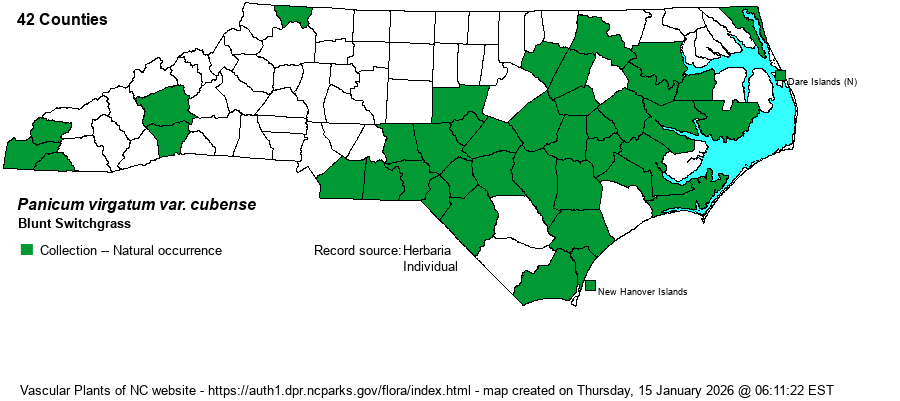| taxonName | relationship | relatedTaxonName | relatedTaxonRefText | relComments |
|---|
|
|
|
|
| Panicum virgatum var. cubense | < | Panicum virgatum | Gleason and Cronquist (1991) | |
| Panicum virgatum var. cubense | < | Panicum virgatum | Flora of North America (1993b, 1997, 2000, 2002a, 2002b, 2003a, 2004b, 2005, 2006a, 2006b, 2006c, 2007a, 2009, 2010) | |
| Panicum virgatum var. cubense | < | Panicum virgatum | Gleason (1952) | |
| Panicum virgatum var. cubense | < | Panicum virgatum | Godfrey and Wooten (1979, 1981) | |
| Panicum virgatum var. cubense | < | Panicum virgatum | | |
| Panicum virgatum var. cubense | < | Panicum virgatum | Radford, Ahles, and Bell (1968) | |
| Panicum virgatum var. cubense | < | Panicum virgatum | | |
| Panicum virgatum var. cubense | < | Panicum virgatum | Wofford (1989) | |
| Panicum virgatum var. cubense | < | Panicum virgatum | Wunderlin & Hansen Flora of Florida (3) | |
| Panicum virgatum var. cubense | < | Panicum virgatum | Haines (2010)=X. | |
| Panicum virgatum var. cubense | < | Panicum virgatum var. virgatum | | |
| Panicum virgatum var. cubense | < | Panicum virgatum var. virgatum | | |
| Panicum virgatum var. cubense | | Panicum virgatum var. cubense | | |
| Source: Weakley's Flora |

